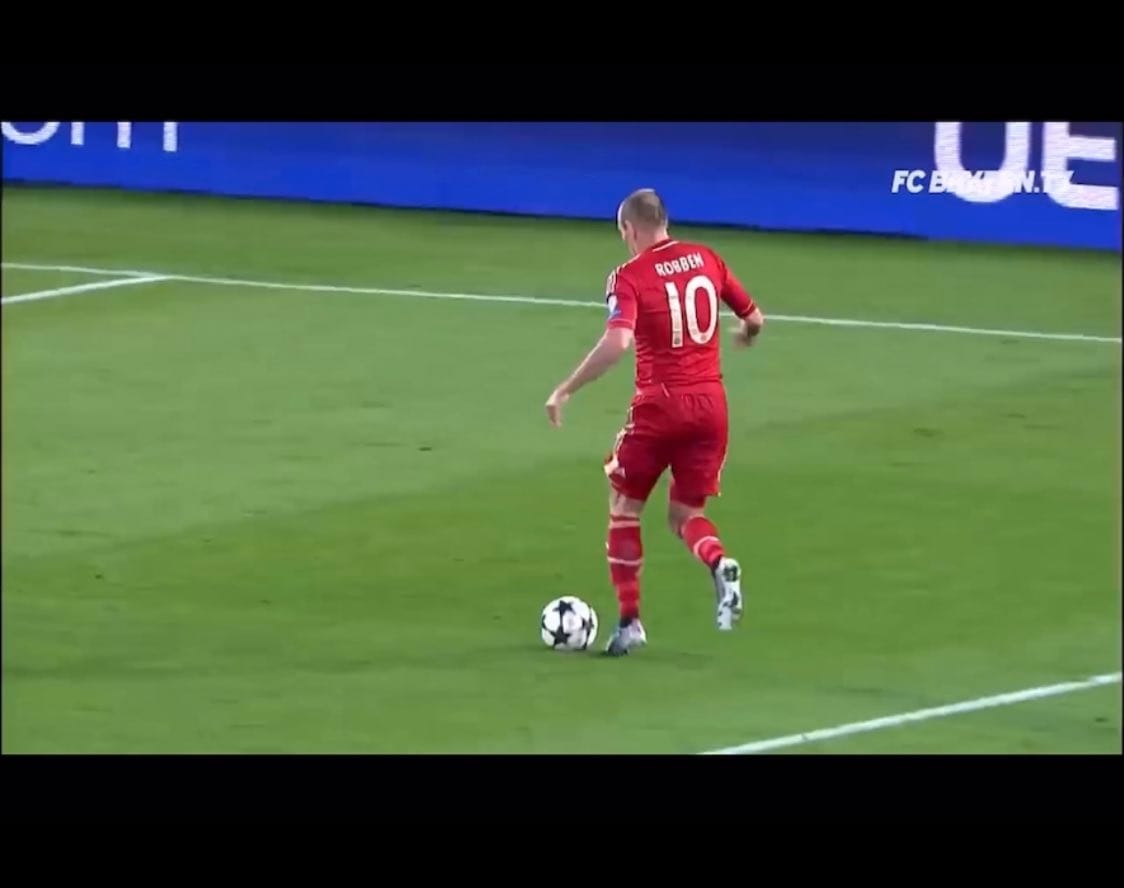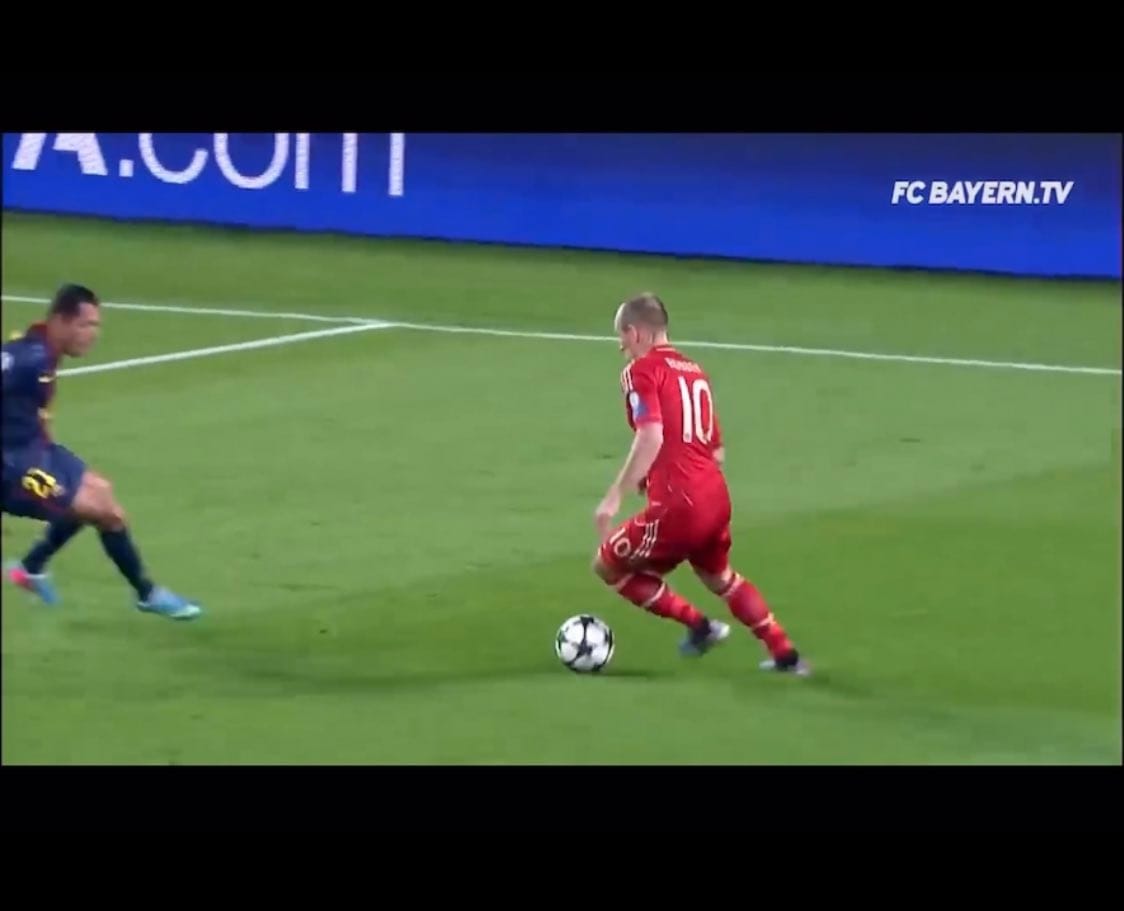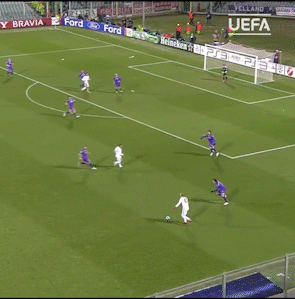Beyond the Playbook: The Role of Anti-Strategy in Competition
What is anti-strategy and how does it manifest in football?

It's 2.06am in Kansas. I've got my laundry whirling downstairs and watching eager college mates return from their Friday night out, but my thoughts keep on coinciding at these:
What makes a particular recruitment strategy effective?
What makes a sequence on the pitch effective?
What makes a skill/move effective?
The answers to these obviously vary, depending on the matter of interest. But one feature that seems consistent is anti-strategy. Things you do just to ruffle your opponent, to increase your margin for error, to gain time and space to execute.
In this piece, I will consider four manifestations of this 'anti-strategy' in football:
- Player: Robben
- Team: playing out from the back
- Organizational: recruitment
- Other fields: business, military, diplomacy
Player: Robben's trademark cut
Whenever one-footed players pull off something special, we often hear this phrase: ‘you know what they are going to do, but you can’t stop it.’ For Arjen Robben, the key – his anti-strategy – was his deceiving, neutral posture. You see other players do use this during penalties (Bruno, Jorginho) or disguised through balls (Kroos).
The two frames you are about to see are less than .30 seconds apart.
• The neutral stance to lure the opponent into setting for a duel.

- The power-step to attack the opponents flow/momentum.

(If you're a committed reader to the blog, you'll notice that I have used this example before. Do feel free to send me recommendations/clips of similar situations. It's not easy.)
Robben possessed this special ability to lure his opponent's momentum. 'Come get me, I'm vulnerable.' This essentially platformed his ability to cut in.
Watch this clip — breakdown in the following tweet.

1. Robben’s touch to cut across the pitch.
2. Robben overcomes his horizontal momentum to settle in a neutral stance — facing the defender.
3. Robben is locked in with opponent; the defender is set to engage; they have him. Sike!
4. Robben takes a power step and evades the defender.
In real-time, from our couches, we’d complain, ‘everyone knew he was going to cut in.’ Yet, A. Robben consistently painted a different picture for the defenders on the pitch. You might anticipate the outcome, but you can’t beat the physics.
Anti-strategies like this are the equivalent of luring a 20 ton-truck into a bend, then asking them to stop. Momentum says no.
Team: playing out from the back
When playing out from the back, teams occasionally use decoy runs to open passing lanes for the player on the ball.
A few setups also have players — esp. GKs — use gestures to create time: point at a (pseudo) receiver, show for the ball without intending to receive.
These moves, while not directly enabling progression, help confuse and distort the opponent.
Good team-strategy, in this sense, is not just about culturing movements and actions for your team. It’s also culturing anti-moves aimed at your opponents: actions designed just to throw them off.
Organizational: Recruitment
These are some ways anti-strategies manifest on an organizational scale:
- Recruiting a player (ahead of schedule) just so your competition can’t.
- Recruiting a key stakeholder from another team to become 'one of the others' at your institution.
- Leveraging the media to stir action and market movement.
- Publicizing a market/contract approach you employed after it usefulness has dwindled.
Other Fields
- Business: Companies develop products specifically designed to counter rival offerings or use disruptive marketing tactics to shift consumer attention.
- Military: When you watch or read about military operations, anti-strategy is prominent: actions like deception, camouflage, or feints to mislead the enemy about one's actual intentions or capabilities.
- Diplomacy: In diplomatic relations, countries take positions or make statements intended to counteract or neutralize the influence or actions of other nations.
However subliminal, these features also manifest in football.
Whereas common analysis stops at 'here is what X is doing to progress the ball,' we can find tremendous value in 'here is what X is doing to prevent Y from preventing X from progressing the ball.'
It's 2.52am, and the base draft of this piece is completed.
10.25pm two days after, and it's about to be published.
What Next?
If you enjoyed this, consider subscribing to BallerzBantz, following us on Twitter, and sharing this with someone. We're publishing one bite-sized analysis + solution daily. By subscribing, you will receive one synopsis each week.
Join us to stay ahead and contribute to the community.
Who is the writer?
Joel A. Adejola is an undergraduate at the University of Kansas (KU), where he studies Engineering and Philosophy.



